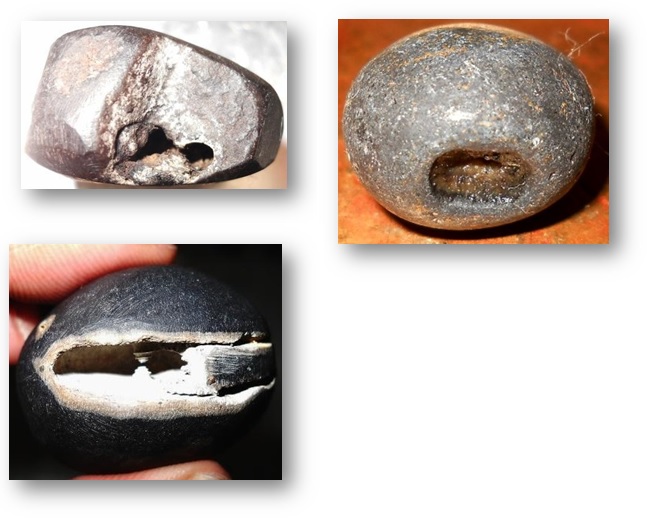While it is listed as Dadhivamana in the Brahma Vaivarta Purana, this Shaligram is often described as a variation of the more common Vamana Shaligram of the Dasavatara sequence of Vishnu’s incarnations (See Vamana Shaligram). Its description differs from the more standard Vamana Shaligram however, in that the Dadhivamana Shaligram is often identified by ritual specialists as having a “raised head, being yellowish in color, and containing unclear chakras.â€
The Dadhivamana Shaligram takes its name from the Dadhi Vamana Stotra (Prayer to Vamana) where Vishnu takes the incarnation of Vamana, his fifth avatar, to destroy the pride of the great Asura king Mahabali. Though a demon, Mahabali was a benevolent emperor. But he usurped the Deva kingdom and as such, Vishnu took the form of a young, dwarf, Brahmin boy called Vamana and requested that he be granted three steps of land as measured by his feet. In spite of his guru’s opposition, Mahabali agreed. Vamana then took the gigantic form of Trivikrama and measured all of the three worlds in two steps. When Mahabali offered his head as a third step, Vamana then requested that instead, Mahabali should live forever in Patala (the underworld). In Kerala, devotees believe that Mahabali makes his home-coming during the festival of Thiruvonam and in Karnataka, devotees believe that he visits them every year on the Bali Padyami. In this way, the Dadhivamana Shaligram is often brought out during the celebrations of these festival seasons.
This Shaligram is also associated with Vamana’s preference for anointing sacred beings in curd or offering rice mixed with curd where he confers strength to the tongue (so as to speak nothing but the truth) and gives a pleasing odor to the mouth.
References: Brahmavaivartta (Prakritikhanda, Ch. 21)
Descriptions:
Small in size with two circular marks (BV).
Very small in size with two circular marks, and having the color of a new cloud. (BV)
Also described as “yellowish, with unclear chakras.”
Discussion:
The Dadhivamana Shaligram is usually uneven in overall shape with one or more openings that appear yellowish in color. The body of the Shaligram itself is also usually mottled with yellow or orange infiltrates and is typically grey to dark blue in color.

Dadhivamana Shaligrams
